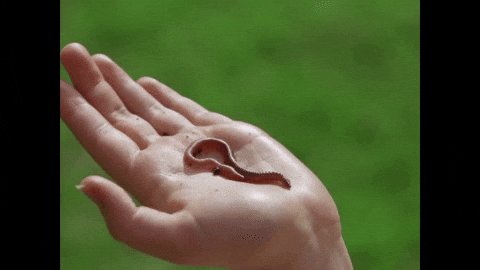
Using tools like a GoPro or similar action cameras, you can set up a time-lapse shot that captures the graceful writhing of these critters. Just like cooking a gourmet meal, you need the right ingredients and technique to make it work. Let’s dive into how to get started with this captivating project, ensuring you have everything you need to succeed.
What Are Ribbon Worms?
Ribbon worms, known scientifically as Nemertea, are quite the intriguing creatures. They’re not just some garden variety worm; they can be found in various environments, from marine ecosystems to freshwater habitats. These worms can stretch several feet long but are often very thin, making them look like ribbons gliding through the water.
You might be wondering, “What’s so special about ribbon worms?” Well, they possess unique features, such as a proboscis that can shoot out to capture prey. Watching them move can almost feel like viewing a slow-motion dance. Time-lapse photography can help us appreciate their movement by speeding up their slow and fluid motions into a digestible format.
Getting Started with Time-Lapse
To record ribbon worms effectively, you’ll need a good setup. Choosing the right camera is essential. While many opt for a GoPro or similar action cameras due to their portability and ease of use, you can also use any device that allows for interval shooting. This is where you’ll need to set the camera to take pictures at specific intervals, capturing moments that would otherwise just pass by.
You might be asking, “How often should I take photos?” Depending on how long you plan to record, adjust your interval. If you’re filming for several hours, capturing a shot every two seconds could work well. For shorter durations, every second might provide smoother motion. The key is to strike a balance so that the final product effectively showcases the ribbon worm’s movements without being too fast or choppy.
Setting Up Your Time-Lapse Rig
Now let’s talk about the nuts and bolts of your setup. You’ll want a stable location where your ribbon worms will perform their slow-motion ballet. A shallow tank filled with clean saltwater (if you’re filming marine ribbon worms) is a great choice. Make sure your camera is secure—using a tripod or a mount can help avoid shaky shots.
Also, consider the lighting. Natural light is fantastic, but too much direct sunlight can create glare. A dimmer area or soft, diffused light might be ideal for showcasing the subtle colors and movements of the worms. Position your camera so it captures ample movement without obstruction, focusing on the area where the ribbon worms are most active.
Capturing the Footage
With your setup ready, it’s time to hit record! Honestly, this is where the magic happens. You might find yourself feeling a mix of excitement and impatience as you wait to see the results. Depending on how long your time-lapse will run, you can take a break. Just remember to check back periodically.
While you’re filming, keep an eye on the conditions. If something changes—like the water level fluctuating or visibility decreasing—you might need to adjust your setup. Sometimes, the best moments can be captured when you least expect them. Finding the right rhythm is key, much like finding the perfect balance in a dance.
Editing Your Time-Lapse Video
Once you’ve captured the footage, it’s time to get into editing. This step is crucial as you’ll be piecing together the many images into a cohesive video. Import your photos into a video editing software. If you’re unsure where to start, programs like Adobe Premiere Pro, Final Cut Pro, or even simpler ones like iMovie can help.
The next step is to select your playback speed. Generally, you might want to set it to around 24 to 30 frames per second for a smooth viewing experience. Here’s the thing: don’t rush through editing. Take your time to add music or text overlays if you want to explain what the viewers are seeing. This can enhance their experience and provide context about ribbon worm behavior.
Common Challenges and Troubleshooting
As with any creative project, you might run into a few hiccups. One common challenge is lighting issues—too dark, and your footage will lack detail; too bright, and you could lose color. If your lighting setup isn’t working, try adjusting the angle or adding a diffuser to soften the light.
Another potential problem is camera shake or misalignment. Ensure your camera is secure and positioned correctly. If it’s shifting during the recording, your footage will end up shaky and less enjoyable to watch. Also, keep an eye on battery levels; using a continuous power supply can help avoid interruptions.
Sharing Your Time-Lapse Work
After all that hard work, don’t keep your masterpiece to yourself! Sharing your time-lapse video can inspire others and spread awareness about these fascinating creatures. Platforms like YouTube, Instagram, or nature-themed forums are great places to showcase your ribbon worm time-lapse.
You might also consider joining online communities or Facebook groups dedicated to marine biology or time-lapse photography. This can open doors for feedback and help you connect with likeminded individuals. Plus, it’s a way to learn from others and refine your skills further for your next project.
In conclusion, using time-lapse to record ribbon worm movement can be a rewarding endeavor. Not only do you get to witness the hidden beauty of these creatures, but you also create something that could inspire others. Whether it’s curiosity or scientific interest, your video can spark wonder in those who watch it. So, grab your camera, set up your tank, and let the adventure unfold!
